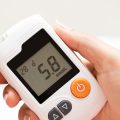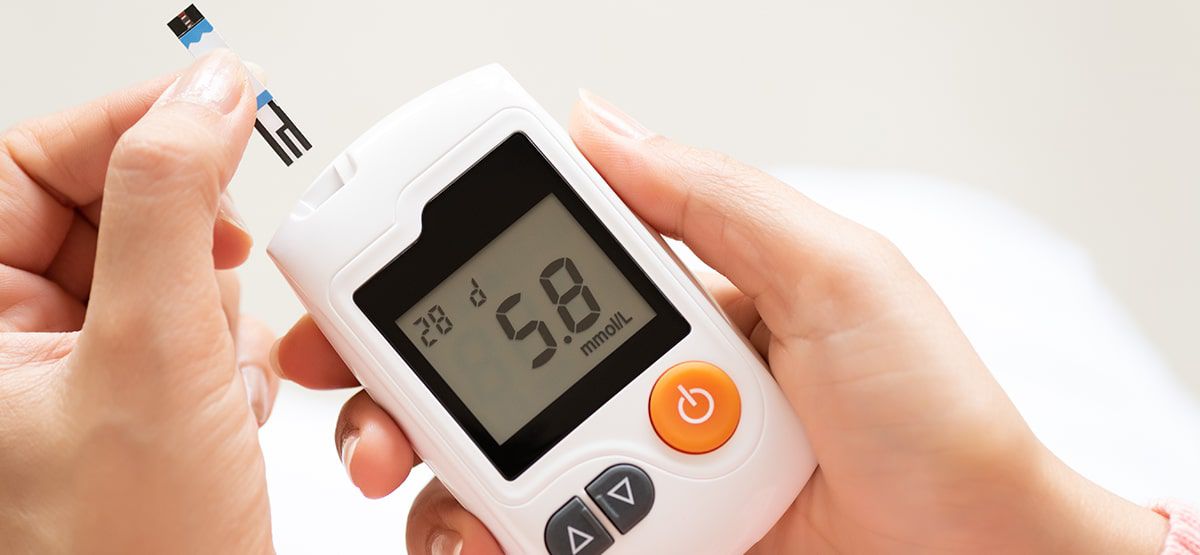
Medical Devices – USA, Europe, Asia and ROW Regulatory News – June 2025
USA
Guidance Document on Cybersecurity in Medical Devices: Quality System Considerations and Content of Premarket Submissions
Cybersecurity in Medical Devices: Quality System Considerations and Content of Premarket Submissions” provides comprehensive recommendations for industry and FDA staff regarding the cybersecurity measures that must be integrated into the design and manufacturing of medical devices. It emphasizes the importance of a robust quality management system that includes risk assessment, mitigation strategies, and ongoing monitoring of cybersecurity threats throughout the device lifecycle. The guidance outlines specific content requirements for premarket submissions, including detailed documentation on the device’s cybersecurity controls, potential vulnerabilities, and the strategies employed to address them. It also encourages manufacturers to adopt best practices for secure software development and to maintain transparency with the FDA concerning any identified risks or incidents post-market. This updated framework aims to enhance patient safety by ensuring that medical devices are resilient against cyber threats while facilitating a more efficient regulatory review process.
EUROPE
MDCG 2025-6 – FAQ on Interplay Between the Medical Devices Regulation & In Vitro Diagnostic Medical Devices Regulation and the Artificial Intelligence Act
The MDCG 2025-6 document, released in June 2025, provides a FAQ-style guidance addressing the interplay between the Medical Devices Regulation (MDR), In Vitro Diagnostic Medical Devices Regulation (IVDR), and the Artificial Intelligence Act. It aims to clarify how these regulatory frameworks interact, particularly for medical devices and in vitro diagnostic devices that incorporate artificial intelligence. The guidance addresses key questions from manufacturers, competent authorities, and notified bodies regarding compliance requirements, risk assessment, and the evaluation of AI-based functionalities in medical devices. By outlining practical scenarios and clarifications, MDCG 2025-6 seeks to ensure a consistent understanding and application of these regulations, promoting safety and efficacy in the use of AI technologies in healthcare.
Questions & Answers Regarding Performance Studies of In Vitro Diagnostic Medical Devices Under Regulation (EU) 2017/746
In June 2025, the European Commission released a document titled “Questions & Answers regarding performance studies of in vitro diagnostic medical devices” under Regulation (EU) 2017/746. This guidance aims to clarify the requirements and expectations for conducting performance studies on in vitro diagnostic (IVD) devices, addressing key aspects such as study design, ethical considerations, and data reporting. It emphasizes the importance of ensuring scientific validity, reliability, and relevance of performance studies to support the safety and effectiveness of IVDs in the market, thereby enhancing regulatory compliance and protecting public health.
Qualification and Classification of Software – Regulation (EU) 2017/745 and Regulation (EU) 2017/746
The guidance on the qualification and classification of software under Regulation (EU) 2017/745 (Medical Devices Regulation) and Regulation (EU) 2017/746 (In Vitro Diagnostic Medical Devices Regulation), updated in June 2025, aims to clarify how software applications are categorized and regulated within these frameworks. It outlines criteria for determining whether software is classified as a medical device or an in vitro diagnostic device based on its intended purpose, functionality, and risk associated with its use. The document emphasizes the importance of considering the software’s role in clinical decision-making and patient management, as well as the implications of integrating artificial intelligence features. By providing detailed classification rules and examples, this guidance seeks to ensure that manufacturers can appropriately navigate regulatory requirements, ultimately enhancing the safety and efficacy of software-based medical solutions in the healthcare sector.
Guidance on the Safe Making Available of Medical Device Software (MDSW) Apps on Online Platforms
The guidance on the safe making available of Medical Device Software (MDSW) apps on online platforms emphasizes compliance with regulatory requirements under the Medical Devices Regulation (MDR) and InVitro Diagnostic Medical Devices Regulation (IVDR). It outlines the necessity for robust quality management systems, clear user information, data privacy protections, and effective post-market surveillance. Additionally, it encourages collaboration between app developers and online platform providers to ensure accurate representation and communication of safety information, ultimately aiming to enhance user safety and app effectiveness in healthcare settings.
The New MIR PDF 7.3.1 SB 10449 is Published
The new Manufacturer Incident Report (MIR) PDF version 7.3.1, designated as SB 10449, has been published and will become mandatory starting November 2025. This updated form is part of the regulatory requirements for reporting incidents related to medical devices and in vitro diagnostic devices within the European Union. The revision aims to streamline the reporting process, ensuring that all necessary information is captured effectively to facilitate better oversight and management of device safety issues. Manufacturers are encouraged to familiarize themselves with the new format and requirements to ensure compliance by the deadline.
BRAZIL
Anvisa Cancels In Vitro Diagnostic (IVD) Devices for Non-Compliance with Health Reforming Deadlines
Anvisa has officially canceled the registrations of several in vitro diagnostic medical devices that failed to comply with the mandatory health reframing requirements by the specified deadlines. This action is in line with the regulatory restructuring initiated under RDC 36/2015 and RDC 830/2023, which mandate updated classification and risk-based registration requirements for IVDs in Brazil. Companies that did not submit the necessary documents for reframing) by the deadline are now seeing their products removed from the regulated market. This update underscores Anvisa’s continued enforcement of compliance timelines and its broader efforts to align with international regulatory standards for diagnostics.
FINLAND
Fimea to Investigate the Conformity of Software-Based Medical Devices
In June 2025, Fimea (Finnish Medicines Agency) announced its intention to intensify investigations into the conformity of software-based medical devices. This initiative is part of a broader effort to ensure that these devices meet the stringent requirements set forth under the EU Medical Device Regulation (MDR). Fimea will focus on evaluating the safety, performance, and regulatory compliance of software as a medical device (SaMD), including their clinical evaluation processes and post-market surveillance. The agency aims to enhance patient safety and trust in digital health technologies by ensuring that all software-based medical devices adhere to established standards and undergo thorough assessment before they are made available in the market.
New Application to Improve Management of Clinical Trials
In June 2025, Finland introduced a new application designed to enhance the management of clinical trials, facilitating better communication and coordination between the Clinical Trials Information System (CTIS) portal and assessors. This initiative aims to streamline the regulatory process, improve data management, and ensure compliance with EU regulations governing clinical research. The Central Committee on Research Involving Human Subjects (CCMO) is actively involved in this development, which is expected to bolster the efficiency and effectiveness of clinical trials across the country, ultimately benefiting researchers and participants alike.
GREECE
Publication of a Circular on the Use of the English Language in the Labeling and Instructions for Use of Medical Devices for Professional Use
The National Organization for Medicines in Greece reiterated its guidelines regarding the use of the English language in labeling and instructions for use (IFU) of medical devices intended for professional use. The organization confirmed that while Greek remains the primary language for public-facing materials, the inclusion of English in professional documentation is encouraged to ensure that healthcare professionals have clear and comprehensive access to vital information. This update aims to support the effective use of medical devices in clinical settings, particularly as healthcare becomes increasingly interconnected and reliant on international standards. The organization emphasized the importance of adhering to these language requirements to enhance communication and safety in the use of medical technologies.
INDIA
Regulatory Requirements for Outsourcing Sterilization Activity of Medical Devices by a Manufacturer Under Medical Device Rules 2017
The Central Drugs Standard Control Organization (CDSCO), through a subcommittee of the Drugs Consultative Committee (DCC), has clarified that a loan license is not required when a medical device manufacturer outsources sterilization activities, provided specific conditions are met. These include the manufacturer holding a valid license to manufacture the sterile medical device, entering into a formal agreement with a sterilization facility that is itself licensed under the Medical Device Rules (MDR), 2017, and retaining full responsibility for quality assurance, including sterilization oversight. Additionally, the product label must clearly display both the manufacturer’s license number and the sterilization facility’s license number.
IRELAND
Clinical Trials Involving IVD Performance Studies, Coordinated Assessment Pilot
Ireland has recently launched a coordinated assessment pilot for clinical trials involving In Vitro Diagnostic (IVD) performance studies, aimed at streamlining the evaluation process for these crucial medical devices. This initiative is designed to enhance collaboration among regulatory bodies, ethics committees, and stakeholders involved in IVD studies, thereby reducing duplication of efforts and expediting approvals. The pilot focuses on harmonizing assessment criteria and documentation requirements, ensuring that IVDs can be evaluated more efficiently while maintaining high standards of safety and effectiveness. This move aligns with broader European efforts to improve the regulatory landscape for medical devices and supports Ireland’s commitment to advancing healthcare innovation.
JAPAN
Biological Safety Evaluation of Medical Devices and Changes in Raw Materials.
The recent update in Japan concerning the biological safety evaluation of medical devices mandates a more stringent assessment process to ensure that all potential risks associated with the materials used are thoroughly analyzed. Manufacturers must now submit detailed documentation whenever there are changes in raw materials, including justifications for these changes and a comprehensive assessment of their effects on the device’s overall safety and performance. The regulation emphasizes alignment with international standards, particularly those set by ISO10993-1, to facilitate smoother global market access for Japanese medical devices. Furthermore, the update enhances the focus on risk management practices throughout the entire lifecycle of medical devices, from development to post-market monitoring, thereby reinforcing Japan’s commitment to ensuring the highest safety standards in the medical device sector.
MONTENEGRO
Updated Instructions on How to Submit the Risk Management Plan
Montenegro has recently issued updated instructions for submitting the Risk Management Plan (RMP), aimed at enhancing the regulatory framework for health and safety in medical product management. The new guidelines provide detailed procedures for stakeholders, including healthcare providers and manufacturers, on how to effectively prepare and submit their RMPs. Key updates include specific templates to be used, deadlines for submission, and requirements for documenting risk assessments and mitigation strategies. These changes are designed to improve the quality of submissions, facilitate better monitoring of risks associated with medical products, and ensure compliance with national and European health regulations, ultimately contributing to safer healthcare practices in Montenegro.
PORTUGAL
Guidance Document Published For Joint Scientific Consultations on Medical Devices
The Member States Health Technology Assessment Coordination Group (HTACG) approved a Briefing Document Template for Parallel HTACG/Expert Panels Joint Scientific Consultations for Medical Devices. This guidance aims to facilitate the preparation and execution of Joint Scientific Consultations (JSC) in medical device assessments, as outlined in the European Health Technology Assessment Regulation (HTAR). Developed by the JSC subgroup and achieving consensus among Member States, the document is now available on the European Commission’s website, marking a significant advancement in the operationalization of the new European system for joint health technology assessment, enhancing coordination and harmonization across the EU.
SINGAPORE
Introducing “SHARE” – Your Digital Portal For Medical Devices
The SHARE (Singapore Health Product Access and Regulatory E-System) is set to launch on 14 July 2025, replacing the existing MEDICS (Medical Device Information Communication) System for Medical Devices product registration and license submissions. This new portal aims to streamline regulatory processes, facilitating compliance for businesses. Users can access SHARE with their Company Pass to utilize various e-services, including product registration for Class BCD medical devices (new submissions, change notifications, cancellations, and retention), product notification for Class A medical devices (new notifications, amendments, and cancellations), dealer licenses (new submissions, amendments, cancellations, and renewals), special access route, change of registrant, free sale certificate for Class A and Class BCD medical devices, and export certificate. This initiative reflects a commitment to enhancing efficiency in regulatory practices.
UK
First Major Overhaul of Medical Device Regulation Comes Into Force Across Great Britain
A significant overhaul of medical device regulation took effect across Great Britain on June 16, 2025. This update aims to enhance the safety and effectiveness of medical devices by introducing stricter monitoring requirements, more rigorous pre-market assessments, and clearer guidelines for manufacturers. Key changes include the establishment of a new regulatory framework that emphasizes post-market surveillance and vigilance, ensuring that any adverse events are promptly reported and addressed. Additionally, the reforms mandate increased transparency in the approval process, requiring manufacturers to provide comprehensive data on device performance and safety. The updated regulations also promote greater collaboration between regulatory bodies, healthcare providers, and industry stakeholders to foster innovation while prioritizing patient safety and public health. These measures align with international best practices and are intended to restore public confidence in medical devices following previous controversies regarding device safety.
Don’t miss out! Click here to stay in touch.
Categories
- Biopharma (58)
- Consumer Health (21)
- Cosmetics (11)
- Diagnostics (5)
- Digital Health (8)
- Food (2)
- Medical Device (112)
- OTC (5)
- Regulatory Intelligence (13)
- Standards (41)
Recent Blogs
Get the latest updates from Vistaar

Related Posts
CONNECT WITH US

Let's talk about how Vistaar can help you




